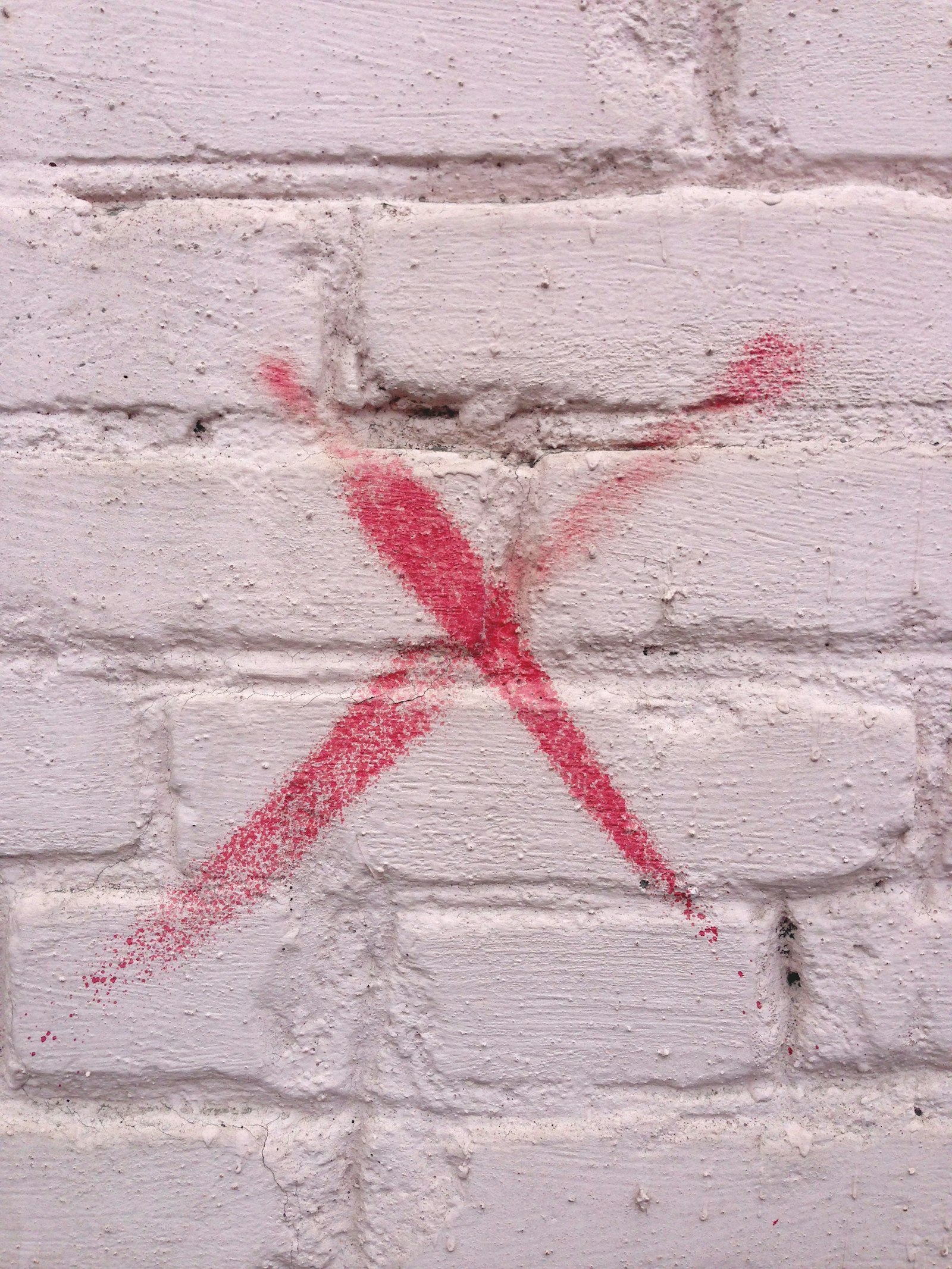It's a bit early to be rethinking the T25, but in truth, I began questioning myself on this one last season and still haven't stopped.
Big Success
The problem with Liljegren is that people try to sell him hard. I invented the term "big success" just for him, because if a GDT feels like a constant stream of blame the defenceman based entirely on who was closest to the goalie when the puck went in, then Liljegren is the big exception where every good thing he does is extolled to the heavens. It's like a room full of Mac enthusiasts. Or worse: Linux cultists. The sales pitch makes me suspicious.
I like the guy fine – actually his personality is very dry and very funny in interviews. Someone started that weird rumour just as he hit the NHL that the j in his last name is pronounced like jam or jelly. Bob McKenzie bit hard, and it sounds hilarious every time he says the name. I bet it was Liljegren himself who cooked that up. He has also done a very good, sensible, and thoughtful bit on why no one should actually try to say Swedish names perfectly.
If that's not enough, at a time when it was obvious that only one of the old Marlies top pair would survive the cap crunch, he and Rasmus Sandin stayed friends. They're still friends, and they kept the business – at least publicly – out of their personal lives.
But oh, my god, did you see that? Did you see how he skated that puck up the ice? That was amazing, and then he passed it, it was so perfect, and wow. Just wow.
Yeah, okay, calm down.
Defenceless
I remember once getting so frustrated, I brought out that dreadful rhetorical device, the period after every word. Only thing worse is the clapping emoji. He. Can't. Defend. And yeah, okay, calm down. That's a bit over the top, but not a whole hell of a lot.
Flash to the playoffs – first though, I should explain that I don't have a big visual memory for specific plays in hockey. No, I don't remember who scored that goal that one time, or exactly who was on the ice when the guy did the thing. I don't watch the game that way. I'm much more of a watcher of space and relative positioning, patterns, flows. To see most specific plays, I have to be hyper-focused on one player, which is like the difference between reading for fun and reading to edit. I do that as a job of work, a labour I applied to Nikita Zaitsev years ago, and I still think I've got a better understanding of him than anyone who mutters about how "just bad" he is. I think I know why he plays as he does in the NHL, and wow, how valuable is that! Sometimes, though, some individual events leave an impression.
The playoffs. Florida. The Panthers put two guys on Liljegren, one hit him in the corner, the other took the puck and passed it – with no one there to even try to stop him – to an open man and in it went. Easy. The only question is why hadn't every team in the NHL figured out that trick. Maybe Paul Maurice spent enough time watching Ville Heinola try to play in the NHL, that he just knew.
What I said about Liljegren in the T25 (it's actually a SNW joke) was me at my most irritated because I don't want to rank him second:
I don’t think the calculus of his game solves to a number that is a net benefit to the team unless you use him so carefully, you have to fill in the rest of your roster to support him – why do that?
This is what I'm rethinking. Or rather, I'm rethinking the entire issue of how we think and talk about defencemen in a more general way and how that leads to having unfair expectations. Because I think I'm not wrong about Liljegren so much as categorizing him improperly because my expectations are off about who does what at what position on the team.
Here's the villain of the piece: Top Four and Bottom Pair.
Four plus Two
Liljegren (and Sandin, when he was on the Leafs) are gonna be top four defenders for sure! That was the typical T25 gush of optimism. And the problem, the reason I've been irritated so much by Liljegren and his cadre of devoted, well, devotees, is that there's no such thing as top four, and I never fully realized that.
I'm actually pretty embarrassed that I let something as stupid as ice time or common parlance influence me so much when I know full well what the distribution of talent looks like in the NHL. In a nutshell: the similarity between the bottom pair defence and the middle pair is greater than the similarity between the middle pair and the top pair. If we want to split the D in two, top pair and bottom four makes more sense.
This is not, of course, universally true. Some teams emphasize defence either through accident of draft success or design. Some teams tool along with their best defender on LTIR and have six or seven bottom four guys along with one top pairing man. You get to decide, based on your own biases, if that one is Morgan Rielly or TJ Brodie. (Sometimes it really is Mark Giordano despite all the weirdos who want him to retire.)
This ongoing thought process was kicked along by Micah McCurdy's sG charts over the summer, which are a paid feature at HockeyViz. The scatter plot of all NHL defenders showed what we all should expect: A player that nets out to zero, by this measure, could be playing on the second pair. Liljegren nets out to zero, by this measure. Nets out to zero means adding up all the valuations of all the parts of a his game, not just looking at goals for and against.
Back in the day when Corsi Rel was the way everyone blamed players for game outcomes (Corsi Rel is that player's Corsi % relative to the team with plus as good and minus as bad. You add up everyone and you get 0) I used to joke that Leafs fans would never be satisfied until everyone had a positive Corsi Rel. And basically I'm now lighting the match to hoist myself on my own petard because essentially, by misidentifying what to expect of a defender, I was doing pretty much that.
One thing to consider here is that measures of individual impact are not perfect. None of sG, RAPM or WAR or any other stat someone puts on player cards and posts on Twitter are infallible. I have no absolute faith in any of it, but I don't think it's valueless either. And what it does well is show population level relationships and distributions. It's very possible that there are aspects of defending specific to preventing goals against that are not measured. It's very possible that the percentage chance of a type of shot becoming a goal historically isn't enough to apportion out the credit for preventing the goal to the skaters and the goalie. So in some way, this net zero on the second pair thing might actually be a net benefit in a small way.
It's not actually important to know that for sure. What is important is knowing how to dole out the ice time, and deciding who has enough to offer, that you will work your roster around to accommodate their weaknesses. The holy grail of six complete players on defence who get points and defend like the guys you remember when you were a kid is not going to happen, so wishing for it seems counterproductive. Unless your goal is to be dissatisfied all the time, in which case: wish away.
Solving for X
Liljegren's defensive results, such as they are, and they are positive, come from his transition game. All the things people gush about are his modern-puck moving prowess in action. He's not a playmaker, a setup man, a goal scorer, a special teams asset or good around the net. He doesn't win board battles or stand up players at the blueline very much, and he isn't hitting hard or in any way lowering the confidence of the Paul Maurices of the world.
If he played on another team, you wouldn't be thrilled if the Leafs acquired him. If he played as much as Justin Holl, you'd have stronger negative feelings. Holl, by the way, nets out as a zero by most measures, maybe a little below. He's also a bottom four defender.
My conclusion here is that, with both Liljegren and Timmins, I was expecting too much and I was disappointed in them for not being what they were never really meant to be. My secondary conclusion is that most teams play their second pair too much. Some of that is inevitable. Say you have three guys in the top pairing range who you want to play most of the minutes. Someone is riding along. And that someone is the guy who is destined to be overrated by everyone calling him a bona fide top-four defender. Unexamined common practice gives ice time to players who should sit more, which is not a weakness Sheldon Keefe is prone to. He does things with defender ice time that reveal he knows what he has and what he doesn't have.
Liljegren is also a player of a certain type, and the questions that type of defender raises can't be answered by recalibrating expectations no matter how many people want to sell me on transition as the most important skill. This isn't about overall skill level so much as the arrangement of skills. Nets out to zero usually happens when some good and less good results at various aspects of the game combine – the player isn't meh at everything very often. Solve for x and get zero, but how you got to x = 0 matters. What's there and what isn't there in the equation tells you more than one number can.
There isn't just one correct recipe for defender skills. So to cook one up, you have to know what you want to emphasize in your bottom four, which skills. Or maybe you think the game is just a net number contest and that's what matters. I don't. I never have, but I've been wrong before and will be again.
You may well be saying now that you have to pair up a traditional defensive stay-at-home player with an offensive defenceman, and Liljegren and I are both here to burst this bubble. Liljegren because he doesn't actually have positive offensive impacts – he is the defensive guy on a pair – and me because I think this is how you deploy defence offensively and doesn't mean squat for defence.
I have a choice now. I can make this article Brian-length or I can wrap it up and not explain that. What I'm going to do is tell you a story about Matt Duchene, so I guess it's choice one.
A Long Long Time Ago
Patrick Roy, who had no fear about what anyone thought of him, did not like Duchene as a centre. He had no other options, so he tried a trick where he tasked Duchene with taking the faceoff in every zone, playing C, but if the team was in the defensive zone, he was supposed to fade over into cheating-high winger territory and let the winger on his line play as the defensive centre. It actually worked, because Duchene is smart and quick. But it really only worked on d-zone faceoffs. Broken plays or quick transitions against resulted in blown coverage as everyone tried to do their dance of realignment.
This is what I think about when someone suggests that TJ Brodie can prop up the deficiencies of a zippy little offensive defenceman. Picture Topi Niemelä sometime in the future here, not Liljegren. This will work in the offensive zone as Niemelä "activates" at will, and engages around the net as an offensive player. Mr. Defence can man the line. One defender can do that well enough with a forward covering. Now let's roar back up the ice to defend a rush chance against. How's that working out?
That's not a fair example, everyone gets exposed on those plays, but picture an orderly retreat under covering fire from the backchecking forwards where the defenders get set up to defend. Use your imagination a lot here and picture Leafs forwards who are fully engaged, not puck watching, and know who they're covering. You've got Niemelä on the right making 25% more than Mr. Defence on the left, and the other team is going to do what? Pressure hard on Niemelä's side, that's what. Mr. Defence can't just pop over there while the opposition works the puck around to that side. There can be no swirling dance of realignment. Niemelä has to defend. Maybe he can. I doubt it very strongly, but maybe in this future world he will be up to it.
A successful pairing strategy that works on the offensive blue line is not going to work when you stop being the team that is cycling. This is the ultimate issue with the Leafs and their offensive system and their defensive blunders. They can't just do what they do backwards and in high heels when they switch to defence. It's a more stationary style of play, not the whirl of passes and lateral player movement.
The Leafs offence – and that of a lot of teams the Leafs face – is like the semi-structured chaos of a big dance number. Think Swan Lake or the Nutcracker, or if the tutus get in the way of your imagination, the opening to the film version of West Side Story. Defence that is consistently successful is like watching Janet Jackson's backup dancers. Stationary, disciplined, alert, risk-averse, functioning as a unit while individually agile. It's not just a different skillset, it's a different emotional space. If you can combine creativity and discipline at an elite level, you are Mark Stone and you own a sparkly Cup Ring. Most people can't.
It should not be lost on anyone that almost all of the Leafs who return a positive number when you tell them to defend do it by active engagement – puck thieving, board play, stick checks, pass interceptions. A lot of that happens outside the defensive zone. The 48th Highlanders don't show up to march in lockstep to the defensive zone when that fails and the Leafs just need to react fast to stop scoring chances. The Leafs have some shot blockers, and not much else. There's not even much zone entry denial going on, or there wasn't – I feel hazy in my understanding of Jake McCabe and think everyone hates him for big mistakes or lack of points. I'm not sure what he does exactly, but he solves to an x that says he's a lot better than Liljegren.
X
So, my rethinking is this: Liljegren is about what you get in a bottom-four guy who doesn't play the power play, and that's nothing to get excited about. If he rides along on a second pair, it doesn't make him worth more if the value of x never changes. Zero isn't valuable to game outcomes, and it's not scarce. Don't pay too much for it because the dude's a righty or because you drafted him, and play the better players a lot more minutes.
When a guy like this hits the T25, he should be ranked somewhere below the forwards who could legitimately land as high quality third liners. And yes, he sure enough does look neato doing that thing with the puck in the neutral zone there.
But if his big weakness is defence? Maybe consider someone else who solves to the same x in a way that won't make Paul Maurice rub his hands in anticipation.







Comment Markdown
Inline Styles
Bold: **Text**
Italics: *Text*
Both: ***Text***
Strikethrough: ~~Text~~
Code: `Text` used as sarcasm font at PPP
Spoiler: !!Text!!